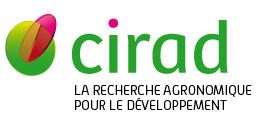Seasonality of nitrogen partitioning (non-structural vs structural) in the leaves and woody tissues of tropical eucalypts experiencing a marked dry season
GÃĐrant D., Pluchon M., Mareschal L., Koutika L.S., Epron D.. 2017. Tree Physiology, 37 (6) : p. 790-798.
Numerous studies have shown that internal nitrogen (N) translocation in temperate tree species is governed by photoperiod duration and temperature. For tropical tree species, the seasonality of rainfall is known to affect growth and foliage production, suggesting that efficient internal N recycling also occurs throughout the year. We tested this hypothesis by comparing the N budgets and N partitioning (non-structural vs structural N) in the different organs of 7-year-old Eucalyptus urophylla (S.T. Blake) Ã E. grandis (W. Hill ex Maiden) trees from a plantation in coastal Congo on poor sandy soil. The trees were sampled at the end of the dry season and late in the rainy season. Lower N concentrations and N investment in the non-structural fraction were observed in leaves during the dry season, which indicates resorption of non-structural N from senescing leaves. Stem wood, which contributes to about 60% of the total biomass of the trees, accumulated high amounts of non-structural N at the end of the dry season, most of which was remobilized during the following rainy season. These results support the hypothesis of efficient internal N recycling, which may be an important determinant for the growth potential of eucalypts on N-poor soils. Harvesting trees late in the rainy season when stem wood is depleted in non-structural N should be recommended to limit the export of nutrients off-site and to improve the sustainability of tropical eucalypt plantations.
Mots-clÃĐs : eucalyptus grandis; eucalyptus urophylla; hybride; fixation de l'azote; croissance; transport des substances nutritives; facteur climatique; saison sÃĻche; feuille; bois; aubier; rÃĐpublique dÃĐmocratique du congo
Documents associÃĐs
Article (a-revue à facteur d'impact)
Agents Cirad, auteurs de cette publication :
- Mareschal Louis — Persyst / UMR Eco&Sols
